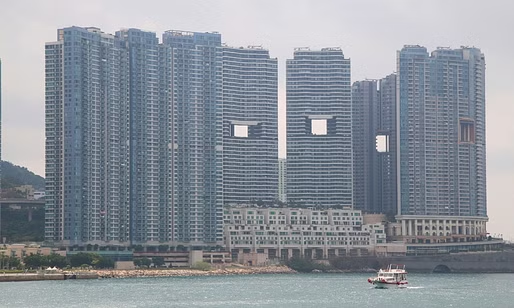If you’ve ever gazed at Hong Kong’s iconic skyline, you might have noticed an unusual architectural feature: many of the skyscrapers have holes in their structures. These aren’t just design quirks—they’re rooted in ancient beliefs and traditional practices.

The Concept of Dragon Gates
In Hong Kong, these holes are known as “dragon gates,” and they are deeply intertwined with the principles of feng shui, an ancient Chinese philosophy that emphasizes harmony between individuals and their environment.

According to feng shui, dragons are powerful and benevolent creatures that inhabit the mountains and waterways. The belief is that these mythical beings need a clear path to move freely between the mountains and the water.
By incorporating dragon gates into the design of skyscrapers, architects ensure that these paths are unobstructed, which, in turn, is thought to bring good fortune and prosperity.
Feng Shui and Business
The influence of feng shui extends beyond mere superstition. It has practical implications for businesses and their success.

For example, the Bank of China Tower, with its controversial design that some believe disrupts feng shui principles, has been cited in discussions about its impact on the financial stability of nearby businesses.
Such beliefs underscore the cultural significance of feng shui in shaping architectural decisions and its perceived impact on commercial success.
Modern Architectural Considerations
While modern skyscrapers are engineered with state-of-the-art features like double-paned, waterproofed windows and reinforced steel beams for stability and insulation, the integration of dragon gates highlights how traditional beliefs are harmoniously blended with contemporary design.

These ancient practices show that cultural and spiritual values continue to play a significant role in modern architectural practices, even in high-tech, urban environments.
A Cultural Legacy
The dragon gates in Hong Kong’s skyscrapers are a testament to the city’s rich cultural heritage and the enduring influence of feng shui.
They represent a fascinating intersection of tradition and modernity, where ancient beliefs continue to shape contemporary architectural practices.
In the bustling metropolis of Hong Kong, the presence of dragon gates in skyscrapers reveals a unique blend of cultural reverence and practical design. These architectural features are not just about aesthetics; they are deeply embedded in the cultural fabric of the city, reflecting the belief that maintaining harmony with traditional principles can lead to prosperity and success.

